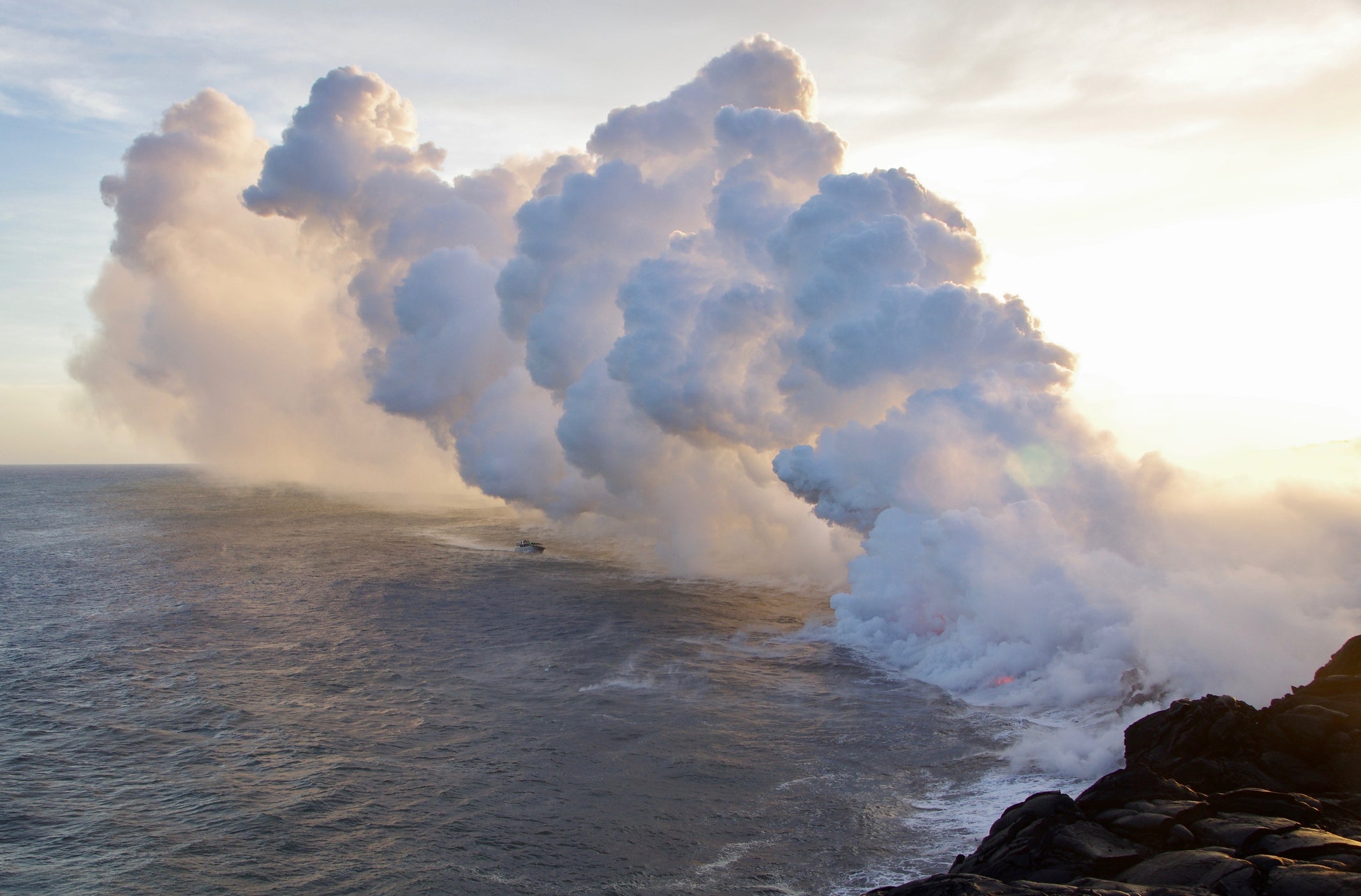Massive volcano being formed off of West Coast thanks to hundreds of underwater earthquakes every day
Axial Seamount could erupt by the end of this year, scientists say, although it won’t pose a danger to life

Your support helps us to tell the story
From reproductive rights to climate change to Big Tech, The Independent is on the ground when the story is developing. Whether it's investigating the financials of Elon Musk's pro-Trump PAC or producing our latest documentary, 'The A Word', which shines a light on the American women fighting for reproductive rights, we know how important it is to parse out the facts from the messaging.
At such a critical moment in US history, we need reporters on the ground. Your donation allows us to keep sending journalists to speak to both sides of the story.
The Independent is trusted by Americans across the entire political spectrum. And unlike many other quality news outlets, we choose not to lock Americans out of our reporting and analysis with paywalls. We believe quality journalism should be available to everyone, paid for by those who can afford it.
Your support makes all the difference.A “fascinating” eruption is approaching as a sleeping giant underwater volcano stirs with seismic activity near America’s west coast.
The seismic activity of Axial Seamount, a submerged volcano roughly 300 miles off the coast of Oregon and more than one mile beneath the sea’s surface, has been increasing with hundreds of small earthquakes taking place every day.
Bill Chadwick, a volcanologist who has been monitoring activity associated with Axial Seamount for six years, believes the seismic activity shows an eruption could happen by the end of this year.
“An eruption does not seem imminent, but it can't do this forever," Chadwick wrote in an Oregon State University blog post with his colleague, University of North Carolina geophysicist Scott Nooner.
Located on the Juan de Fuca Ridge in the Pacific Ocean, the underwater shield volcano last erupted in 2015, following previous eruptions in 1998 and 2011.
The volcano, first detected in the 1970s by satellites, is 1.1km tall with a peak sitting 1.4km below the surface of the sea.
Scientists say they are noting the same signs of swelling at the volcano’s base which preceded previous eruptions, as rising magma presses beneath the mountain’s thin surface, Discover Magazine reported.
The eruption won’t be cataclysmic, nor will it be noticeable to anyone above water. The eruption is likely to crack open at the surface where magma will ooze out, rather than exploding it, and it is unlikely the eruption will cause a tsunami.
Mike Stone, a researcher at Yellowstone Volcano Observatory, told Cowboy State Daily: “This particular volcano is probably the best-monitored submarine volcano in the world. It's fascinating and doesn't really pose a hazard.
“When Axial Seamount erupts, it'll look a lot like a Hawaiian lava flow eruption,” Stone added. “It's not an explosive eruption, but calm effusions of lava flowing out of the caldera and across the seafloor.”
Observers have been watching the volcano since 1997 using a mixture of geophysical, chemical and biological sensors, along with video cameras which capture signs of magma flow.
Axial Seamount will not endanger any lives, but observing the volcano allows scientists to better predict other eruptions by improving their understanding of the factors leading up to an eruption.
Join our commenting forum
Join thought-provoking conversations, follow other Independent readers and see their replies
Comments